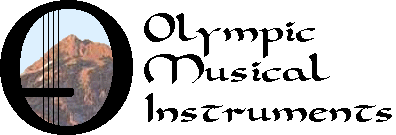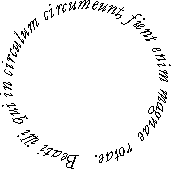
Options on the Luteback
We offer a variety of options on the Luteback model. This page and the pages explaining the specific options will help you to choose the ones that are appropriate to your playing level and style, your budget, and your future plans for your instrument.
As gorgeous as the luteback model can be, there are some disadvantages. It's harder to find a convenient way to set it down and have it stay put. Some people find it more comfortable to play because of the bowl-backed shape, and some people find it less convenient for exactly the same reason. Its greater depth makes it harder to transport, especially on airplanes.
If this is your first hurdy-gurdy, we strongly advise you to limit your choices. First-time hurdy-gurdy buyers tend to think, "This will be my only hurdy-gurdy, so I should get all the bells and whistles." This may seem like a good idea, but it's better to start with a simpler instrument and upgrade to a more complex hurdy-gurdy as your playing ability increases.
It's not necessary to choose from the options when ordering - we will contact you to confirm your choices when we start building the instrument.
While prices on most of the options you choose will remain stable while you are waiting for your instrument to be built, some (such as amplification and tuners) are subject to changes in the market, so the price of the option may change by the time your instrument is begun. We will do our best to keep these price changes to a minimum, and you may decide not to include the option if you inform us of your choice before we start building.
To see explanations of the options, click on the titled link on that option.
Soundboard: Western bigleaf maple is the standard choice. Options include Sitka spruce, Spanish cedar, and others.
Body wood: Alternating ribs of Western bigleaf maple and walnut is the standard choice. Options include using a single wood for all the ribs and having those ribs separated by thin strips of contrasting wood. There is a variety of specialty hardwoods available.
Trim pieces: These are the pieces that are on top of the instrument: the keybox top, the wheel cover, the tailpiece, and the wheel cover blocks. African blackwood veneer is the standard choice. Options include black walnut, ebony veneer, and a variety of specialty hardwoods. These pieces are the most likely to be decorated with custom inlay.
Peghead carving: The standard design is a carved head in the style of the Mirecourt studio of Colson and Thouvenel. Custom carving or inlay is available.
Custom inlay: The standard choice for inlay is that the trim pieces have a narrow line of holly (almost white).inlaid in the dark wood of the trim pieces, with leaf shapes of mahogany at the corners. A variety of other inlay examples are shown in the options page. Custom inlay can also be done on the end cap. Some decoration ideas that we have thought of but haven't gotten to try yet are described in the Flights of Fancy page.
Soundboard edging: This is also called the binding. The standard choice is a set of plaques of a single wood or alternating woods, with a line of purfling inside it. The options include a variety of special materials for the plaques or in place of the purfling.
End cap: An end cap is standard. Custom designs are available.
Sympathetic strings: The standard choice for the luteback is four sympathetic strings. The option is for six sympathetic strings.
Tuning mechanism: The standard choice is mechanical tuning machines. There are several options, including traditional friction pegs.
Amplification: There are several options for amplifying the hurdy-gurdy. Because of its shape and the complexity of adding the electronics, it's considerably more expensive to add amplification to a luteback.
Electronic tuner: This option allows the instrument to be tuned without hooking up a seperate tuner.
Tuning: The standard is G/C or D/G tuning. Optional tunings are available.
Third chanter: The standard Luteback has two chanters, with an option for a third.
Tangents: The standard option is a set of locking metal tangents, with an option for the traditional wooden flag style.
Keyfronts: The standard is curved keyfronts, with an option for traditional straight keyfronts.
Tangent wrench: This option is for a custom hex driver with a wood handle that fits in a recess under the peghead.
Drapeau: This drone capo is not included on the standard instrument.
Strap locks: The standard instrument has wood strap buttons, with an option for locks which can't come undone accidentally.
Case: A soft case and a hard case are options for this model.
Bearing adjustment tool: This tool allows the player to adjust the tightness of the tail bearing.
Flights of Fancy: This page describes ideas we've had for the instrument that we haven't had an opportunity to try yet. See if one of them is the hurdy-gurdy you just can't live without.
For the prices on these options, see the pricelist.
Return to the Products page
 Please
contact us if you have comments or questions
about this page or any other page on this site.
Please
contact us if you have comments or questions
about this page or any other page on this site.Alden and Cali Hackmann
Olympic Musical Instruments
Beati illi qui in circulum circumeunt, fient enim magnae rotae.
© Copyright 2000 - 2005, Olympic Musical Instruments.
Please ask for permission to use material from this site. Thank you.